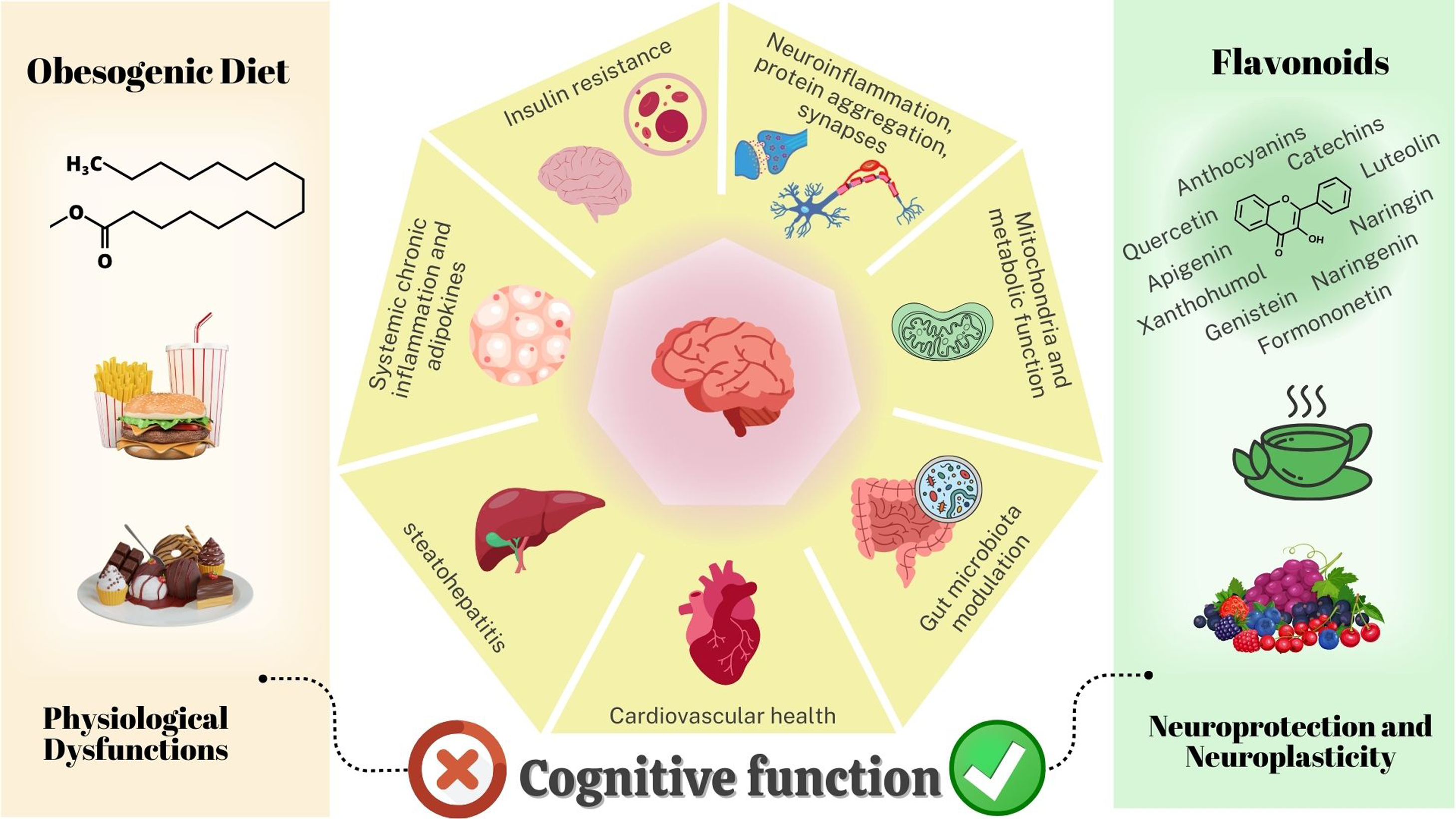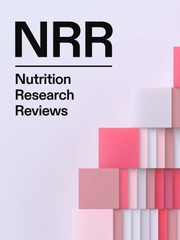No CrossRef data available.
Article contents
From plant to brain: flavonoids in the management of obesity-associated cognitive dysfunction
Published online by Cambridge University Press: 13 June 2025
Abstract

Obesity pathophysiological conditions and obesogenic diet compounds may influence brain function and structure and, ultimately, cognitive processes. Animal models of diet-induced obesity suggest that long-term dietary high fat and/or high sugar may compromise cognitive performance through concomitant peripheral and central disturbances. Some indicated mechanisms underlying this relationship are discussed here: adiposity, dyslipidaemia, inflammatory and oxidative status, insulin resistance, hormonal imbalance, altered gut microbiota and integrity, blood–brain barrier dysfunction, apoptosis/autophagy dysregulation, mitochondrial dysfunction, vascular disturbances, cerebral protein aggregates, impaired neuroplasticity, abnormal neuronal network activity and neuronal loss. Mechanistic insights are vital for identifying potential preventive and therapeutic targets. In this sense, flavonoids have gained attention due to their abundant presence in vegetable and other natural sources, their comparatively negligible adverse effects and their capacity to cross the blood–brain barrier promptly. In recent years, interventions with flavonoid sources have proven to be efficient in restoring cognitive impairment related to obesity. Its modulatory effects occur directly and indirectly into the brain, and three fronts of action are highlighted here: (1) restoring physiological processes altered in obesity; (2) promoting additional neuroprotection to the endogenous system; and (3) improving neuroplasticity mechanisms that improve cognitive performance itself. Therefore, flavonoid consumption is a promising alternative tool for managing brain health and obesity-related cognitive impairment.
Information
- Type
- Review Article
- Information
- Copyright
- © The Author(s), 2025. Published by Cambridge University Press on behalf of The Nutrition Society


